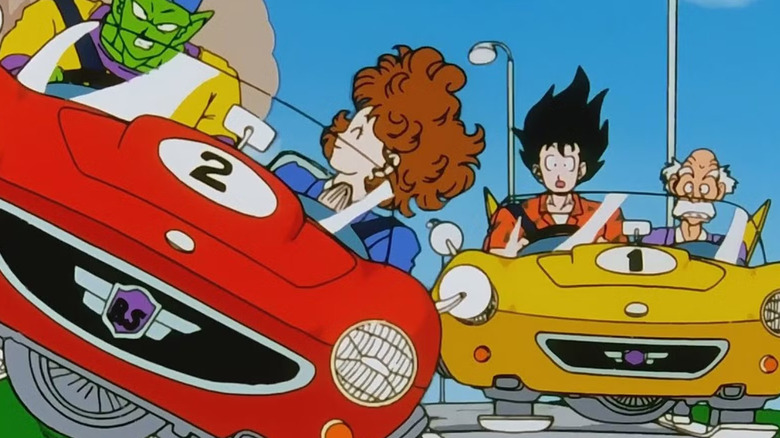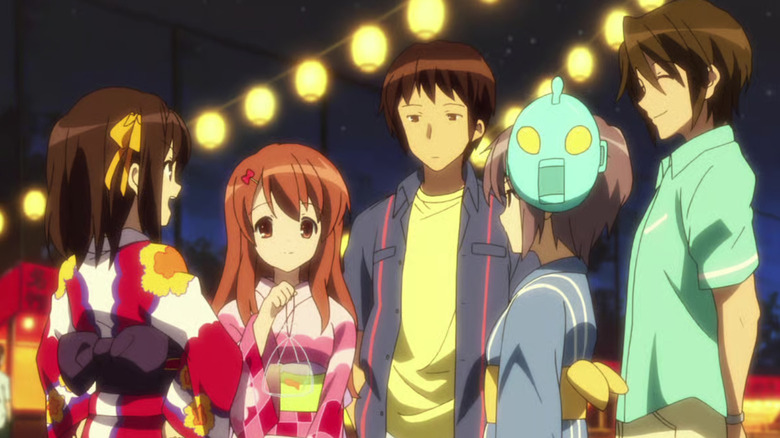
Anime is basically mainstream popular culture now, and discussions that used to occupy Internet message boards play out on social media for all to see. One of the main arguments that any longtime anime fan saw back in the previous generations of The World Wide Web now grips even "mainstream" TV. Namely, "filler" episodes and their place in a given TV show's run, as anime fans and viewers from other parts of the entertainment landscape debate whether or not different series benefit from these entries.
But, despite the concept of a "filler" episode being so long in the tooth, a quick Internet search shows that people want to know if they should be watching the episodes tagged with this derisive term, or if they should not even bother.
Let's go ahead and start with a general definition of "filler" and work our way on down, as the concept itself has morphed because of how people use it to talk about media in different corners of fandom. Filler, in a modern context, can be understood as an episode of a show that "does not 'directly' move a main plotline of a show or series forward and focuses on the characters' interactions instead." This is distinctly broad, and open to interpretation by each individual viewer, which leaves the idea of "filler" as a perfect battleground for needless social media arguments, something anime fans are all too ready to get into the ring and duke it out over. Is it just any episode that doesn't directly put the characters into position to move the biggest plotline in the show forward, or is "filler" an episode that the community around a series decides isn't moving things fast enough? These are the kinds of questions that unfold the second you utter that word online in multiple different arenas, and that ensuing debate obscures the actual show we're talking about.
So, naturally, once we understand that "filler" is a divisive concept, that leads people to wonder if they should consume any episode of a show that doesn't directly serve the "main plot" of the series in question, as that could be understood to be a waste of time by the viewer. The answer varies a lot, and some smarter shows have begun to deconstruct this imaginary border line between the episodes that serve the main plot and those that serve to flesh out the characters or the world. "Filler" is often worthwhile as it builds out the world and creates attachment with the audience, but just like anything else, too much meandering can cause some division for the viewers, it usually comes down to volume.
A Filler Episode Of An Anime Is An Episode Where The Main Plot Doesn't Move Forward, But Is That A Bad Thing?

If there's only a few pit stops on the road to the "big story" at a heart of a series, the "filler" episodes can be nice little changes of pace, while in massive narratives, a ton of detours can be catastrophic. So, play it by ear! The idea of filler episodes not being worth their trouble has proliferated all throughout the internet now, with people saying that you shouldn't be wasting your time on things that don't directly affect the story, or arguing that maybe that time could be used on other hobbies or shows. All of that isn't wrong, per se, but it does miss the forest for the trees, as each individual series is more than just the main story. Something a lot of modern fan discussion ignores is the idea that each program functions as an entire journey of watching the run, rather than the end goal. If you believe that, filler episodes are absolutely part of a total evaluation of a series.
Multiple anime series have iconic filler episodes that epitomize why the genre hasn't gotten rid of the concept. From 2000s animes and their beach episode obsession, to "Dragon Ball Z's" beloved entry with Goku and Piccolo trying to get their driver's license together, there's a lot to love in filler episodes that don't completely move the plot forward. In the case of that "Dragon Ball Z" episode, the trip to a fictional DMV really solidifies the Goku and Piccolo dynamic in ways that just watching them fight and share ideology didn't.
As you might have noticed from that last example, the era of anime discussed here is before a lot of these mainstream social media discussions, and that colors this analysis. I often wonder what this media climate would have done with one of the most iconic filler episode runs in the history of anime, during "The Melancholy of Haruhi Suzumiya's" second season, which produced a run of episodes called "Endless Eight."
Filler Episodes Are Probably More Tolerable When You Already Really Love A Show

"Endless Eight" is a group of almost identical episodes in "The Melancholy of Haruhi Suzumiya" season 2, where the audience is led through a gauntlet of repetitive animation to prove a point about time loops and existence. Back in 2009, we didn't have the endless arguing apparatus that modern social media has become yet, so viewers were confused in June of that year when the same episode seemed to run twice in a row. I won't spoil the complete reason here, but something was afoot. Audiences on message boards now debate whether or not you should even waste time watching the *literal* eight episodes of the time loop as a modern viewer.
This is an extreme example, but each episode is slightly different, and works in a sort of meta-function to draw out a little bit more about the core cast. Despite that, a lot of viewers now and back in 2009 hated that the creative team played with their emotions like that, and that distrust permeates series that don't even perform this kind of massive stunt. Every episode that takes some time to breathe draws some level of discourse in the larger anime community now, and the choice to embrace these moments of character and world-building versus getting to the final antagonist are a personal choice. I'm in favor of getting the full experience of the show because "non-essential" adventures can often be very fun, but completely understand if a viewer doesn't have the time to stroll around and luxuriate in a show, especially if they don't love it. That's the beauty of a bigger community now, everyone will approach it differently.
If you're looking for the easiest way to keep up with all the major movie and TV news, why not sign up to our free newsletter?
Read the original article on SlashFilm.










